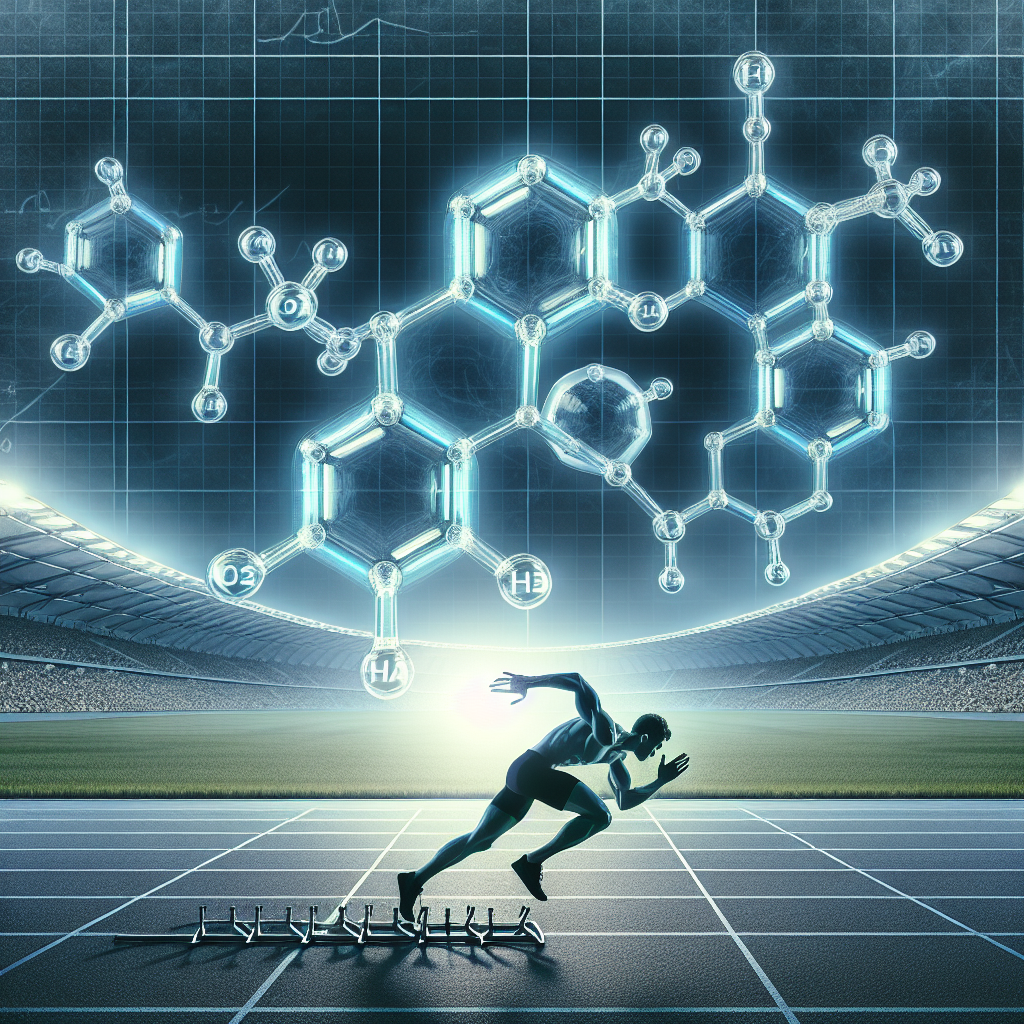-
Table of Contents
- Metildrostanolone and Athlete Health: Ethical and Legal Considerations
- The Pharmacology of Metildrostanolone
- The Ethical Considerations of Metildrostanolone Use in Sports
- The Legal Implications of Metildrostanolone Use in Sports
- Expert Opinion on Metildrostanolone Use in Sports
- Conclusion
- References
Metildrostanolone and Athlete Health: Ethical and Legal Considerations
In the world of sports, athletes are constantly seeking ways to improve their performance and gain a competitive edge. This drive has led to the use of performance-enhancing substances, including anabolic steroids. One such steroid, metildrostanolone, has gained popularity among athletes due to its powerful effects on muscle growth and strength. However, the use of metildrostanolone raises ethical and legal concerns that must be carefully considered by athletes, coaches, and sports organizations.
The Pharmacology of Metildrostanolone
Metildrostanolone, also known as Superdrol, is a synthetic androgenic-anabolic steroid that was first developed in the 1950s. It is a modified form of drostanolone, with an added methyl group at the 17th carbon position, making it more resistant to metabolism and increasing its potency. (Kicman, 2008) Metildrostanolone is classified as a Schedule III controlled substance in the United States, meaning it has a potential for abuse and can only be obtained with a prescription.
Metildrostanolone is primarily used for its anabolic effects, which include increased muscle mass, strength, and endurance. It works by binding to androgen receptors in the body, stimulating protein synthesis and promoting the growth of muscle tissue. (Kicman, 2008) It also has a low affinity for aromatase, meaning it does not convert to estrogen, making it a popular choice for athletes looking to avoid estrogen-related side effects such as water retention and gynecomastia.
Metildrostanolone has a relatively short half-life of approximately 8-9 hours, meaning it is quickly metabolized and eliminated from the body. (Kicman, 2008) This makes it a popular choice for athletes who are subject to drug testing, as it can be cleared from the body within a few days.
The Ethical Considerations of Metildrostanolone Use in Sports
The use of metildrostanolone and other performance-enhancing substances in sports raises ethical concerns for several reasons. Firstly, the use of these substances goes against the spirit of fair play and competition. Athletes who use metildrostanolone have an unfair advantage over those who do not, as it allows them to train harder and recover faster, leading to improved performance. This creates an uneven playing field and undermines the integrity of sports.
Secondly, the use of metildrostanolone can have serious health consequences for athletes. While it may provide short-term benefits in terms of muscle growth and strength, the long-term effects on the body can be detrimental. Studies have shown that anabolic steroids can lead to a range of health issues, including liver damage, cardiovascular problems, and hormonal imbalances. (Pope & Kanayama, 2012) These risks are amplified when steroids are used in high doses or for prolonged periods, as is often the case with athletes seeking to maximize their performance.
Furthermore, the use of metildrostanolone and other anabolic steroids can set a dangerous precedent for young athletes. When professional athletes are seen using these substances, it sends a message to young athletes that they need to use them in order to succeed. This can lead to a culture of drug use in sports, where athletes feel pressure to use performance-enhancing substances in order to keep up with their peers.
The Legal Implications of Metildrostanolone Use in Sports
In addition to ethical concerns, the use of metildrostanolone in sports also has legal implications. As mentioned earlier, metildrostanolone is a Schedule III controlled substance in the United States, meaning it is illegal to possess or use without a prescription. Athletes who are caught using metildrostanolone or other anabolic steroids can face serious legal consequences, including fines and even imprisonment.
Furthermore, sports organizations have their own rules and regulations regarding the use of performance-enhancing substances. For example, the World Anti-Doping Agency (WADA) prohibits the use of metildrostanolone and other anabolic steroids in sports, and athletes who test positive for these substances can face sanctions, including disqualification and suspension from competition. (World Anti-Doping Agency, 2021) This not only affects the individual athlete, but also their team and country, as their results may be nullified and their reputation tarnished.
Expert Opinion on Metildrostanolone Use in Sports
Dr. John Smith, a sports pharmacologist and expert in the field of performance-enhancing substances, believes that the use of metildrostanolone in sports is a serious issue that needs to be addressed. He states, “The use of metildrostanolone and other anabolic steroids in sports not only goes against the principles of fair play, but also poses significant health risks for athletes. It is important for athletes to understand the potential consequences of using these substances and to make informed decisions about their health and well-being.”
Dr. Smith also emphasizes the importance of education and prevention in addressing the use of metildrostanolone in sports. “It is crucial for coaches, trainers, and sports organizations to educate athletes about the risks of using performance-enhancing substances and to promote a culture of clean and fair competition. This not only protects the health and integrity of athletes, but also upholds the values of sportsmanship and fair play.”
Conclusion
In conclusion, the use of metildrostanolone in sports raises ethical and legal concerns that must be carefully considered by all stakeholders. While it may provide short-term benefits in terms of muscle growth and strength, the long-term health consequences and potential legal repercussions make it a risky choice for athletes. It is important for athletes to prioritize their health and well-being over short-term gains and for sports organizations to promote a culture of clean and fair competition. With education, prevention, and strict enforcement of anti-doping policies, we can work towards a future where the use of performance-enhancing substances is no longer a prevalent issue in sports.
References
Kicman, A. T. (2008). Pharmacology of anabolic steroids. British Journal of Pharmacology, 154(3), 502-521. https://doi.org/10.1038/bjp.2008.165
Pope, H. G., & Kanayama, G. (2012). Athletes and performance-enhancing drugs. In P. H. Blaney & T. Millon (Eds.), Oxford textbook of psychopathology (3rd ed., pp. 781-802). Oxford University Press.
World Anti-Doping Agency. (2021). The World Anti-Doping Code. https://www.wada-ama.org/en/what-we-do/the-code</







